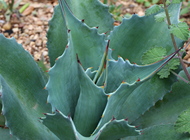 |
Potentilla nepalensis |
 |

| | 'Miss Willmott' |
|

| | 'Helen Jane' |
| Common name |
cinquefoil |
| Family |
rosaceae |
| Life cycle |
perennial (Z3-8) |
| Flowers |
rosy pink (early summer) |
| Size |
12" tall |
| Light |
sun-part shade |
| Cultural notes |
ordinary garden soil |
From seed  |
germinate at room temperature, do not exclude light
detailed seed-starting info below
|
The best-known cultivar of this species is 'Miss Willmott', which is the one that has graced our garden for many years. From the tidy little rosette of glossy strawberry-like foliage that forms in spring, you'd never guess just how wildly the flowering stalks would sprawl just a couple months later. But they do, showing their charming slightly two-toned flowers in surprising places quite a ways from the central plant. Although I used to think of this habit as a nuisance, I've now grown used to it, and work with it to advantage in the garden. When it's done flowering, I just cut it right back, and it returns to its original tidyness.
More recently, we've grown 'Helen Jane' from traded seed. Since that is a hybrid, ours may not be true to the official named variety - I'll just describe it in the guise it's taken in our garden. It's not too different from 'Miss Willmott', but on first impression the flowers are a bit less ruffly, and the overall plant habit is slightly more upright.
|
We left this plant behind in our Pennsylvania garden (and wish it well); we don't grow it in Houston. One or more images of this plant are included in my stock photo catalog About my plant portraits
PlantLinks to other web pages about Potentilla nepalensis
Visitors to this page have left the following comments| Geoff Powers | Aug 11, 2009 | We have a single plant of this variety of potentilla nepalensis. Our soil is not very gardener-friendly (infill on the site of an old gravel working)and rather dry, and so we deliberately picked plants that would thrive in most conditions. It is in a SW facing possition partly overhung by a largish Acer drumondii, amidst bulbs, aquilegia, iris and ground cover plants. However, it just seems to struggle on from summer to summer, without ever increasing in size and looks rather lost among other plants. It does not sound like a plant that needs lots of TLC, so what might the problem be?
I suspect that potentilla nepalensis actually appreciates a decent soil, and will not grow as lushly in a poor soil. That's not to say it will perish, just that you may be disappointed when you compare your plant to pictures of plants grown in ideal conditions. |
| Anne Geeraets | Mar 10, 2011 | I photographed this flower in the Jardin d'Altitude in the high Vosges (France). It's a mountain flower garden with all plants from all over the world. The "Potentilla nepalensis Hooker rosaceae" growed in the part of the Himalaya, between rocks. |
| Tamara | May 12, 2021 | Hello, Rob, my Potentilla nepalensis has grown into a study, leafy plant with plenty of flowers, but they are white, instead of maroon (last year). The soil is very well drained, with some compost. What can be a problem?
Tamara |
- Seed from '04 garden. Baggy 70F with light (92%G, 5d)
- Seed for 'Helen Jane' from T&M via '04 trade. Baggy 70F with light (85%G, 6-12d)
I welcome comments about my web pages; feel free to use the form below to
leave feedback about this particular page. For the benefit of other visitors
to these pages, I will list any relevant comments you leave, and if
appropriate, I will update my page to correct mis-information. Faced with an
ever-increasing onslaught of spam, I'm forced to discard any comments including
html markups. Please submit your comment as plain text. If you have a
comment about the website as a whole, please leave it in my
guestbook. If you
have a question that needs a personal response, please
e-mail me.
common mis-spellings: Mrs Wilmott
Last modified:
June 17, 2006
Contact me
|




